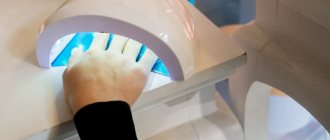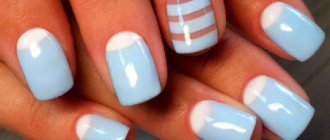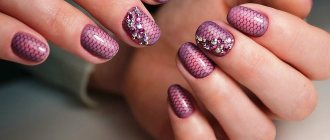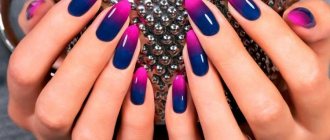Some scientists consider it the most useless part of the human body and suggest that they will disappear in the process of evolution. What will happen instead of a traditional nail plate? Soft pads or another shape? It’s not clear, but before that happens, let’s talk about interesting facts about nails. Many of them are obvious, but a wide range of users are not aware of them.
Who's faster?
The formation of the plate begins in the womb - from about the third week of pregnancy. And pregnant women themselves have a manicure that grows back faster than others, which is facilitated by hormonal changes in the body. During the menstrual cycle it’s the same story, but during breastfeeding the process slows down.
Nails grow an average of 1 mm per week. Whether it will go faster or slower depends on genetic factors, nutrition, and health problems. In 4 months, the nail plate is completely renewed. An interesting fact: there are doctors who determine the rate of recovery of the body after a protracted illness by the intensity of its renewal. If the patient recovers, it grows faster.
Proofreaders, screenwriters, writers, journalists and other professionals whose work involves typing, as well as pianists, can boast of a fast process. Regular percussive movements performed by the fingertips stimulate blood flow and massage the upper area of the fingers. This is the reason for accelerated regeneration.
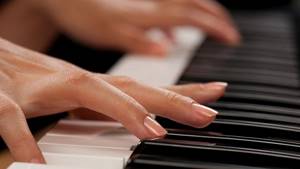
Rhythmic movements are beneficial and harmful, because regular contact with the hard surface of the keyboard often results in delamination of the plate, fragility, and breakage.
With frequent, prolonged contact of fingers with water, it thickens due to the fact that it has the ability to absorb water. This statement is controversial - some scientists claim that water weakens nails.
But no one disputes the fact that the length of the fingers affects the growth rate: the longer the fingers, the faster the process goes. It slows down with age.
Lovers of beautiful manicures need to sleep more, because during sleep the nail grows longer. The fastest is the middle finger, followed by the ring and index fingers, and the slowest are the little finger and thumb.

Example to follow: what kind of manicure do Russian stars do?

Yes, we also love to discuss the bad manicure of stars, but suddenly it became a pity that a beautiful manicure often goes unnoticed. We offer 9 types of coating from celebrities that you will definitely ask your master to repeat! Read…
Red or green?
The first varnish was red. It was invented by Charles Revson in the 30s of the last century. The clients to whom he presented the first collection liked the color. Several years passed, and Revson introduced the fashion for nail polish and lipstick of the same tone, which for a long time became the standard of style and good taste.
Ancient Egypt also preferred dark shades. The status of a person was judged by their saturation: the higher he was, the darker the varnish. The upper class used green paint, and Cleopatra preferred terracotta.
By the way, the Egyptians were the first to start doing manicures. In the 60s, archaeologists carried out excavations on the territory of the ancient state, during which they discovered tombs. The mummies in them, as it turned out later, belonged to the keepers of pharaonic nails - that’s what manicure and pedicure masters were called at that time.

What didn't you know about manicure polish?
- The invention that pushed the beauty industry, which was just emerging at the beginning of the 20th century, to create nail polishes was car paint.
- The first colored varnish, closest in release form and composition to modern ones, was red. It appeared in the early 1930s.
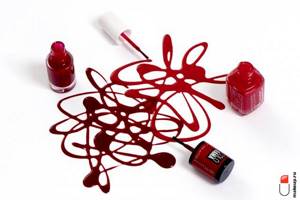
© Makeup.ru
- The polish had a waterproof formula that allowed the product to stay on the nails for about three days. By the way, before this, the durability of colored manicure was even less: the coating was only enough for one day, and it was washed off with water - it was enough to hold your hands under the tap or put them in the bath.
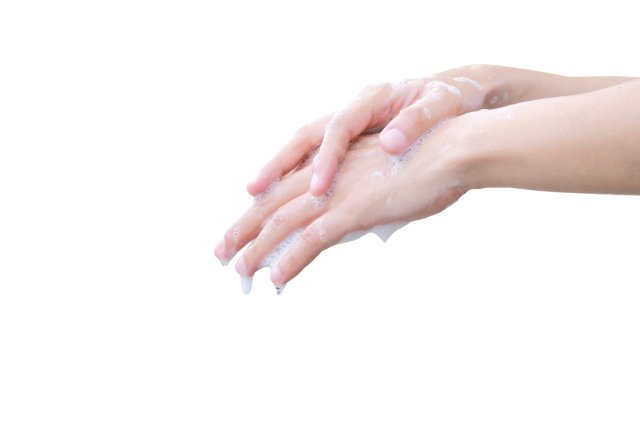
©Getty - As for the safety of varnishes, even today not all of them are perfect. To be 100% sure that your nail polish will not harm your nails, look for bottles marked 5-free: this indicates that the composition does not contain toluene, phthalates, camphor, formaldehyde or formaldehyde resin.
Return to contents
Signs of the ancients
Not only interesting facts, but also signs are associated with fingers. In Rus', newborns did not have their overgrown nails cut off until they were one year old, in order to protect the child from becoming a thief. Mothers gnawed them and collected them in a special bag, and after the first birthday they buried them under a tree. It was believed that this way they protect the baby from the machinations of evil spirits.
A manicure could tell a lot about its owner in ancient China. The length of the manicure determined the connection of its owner with higher powers: the longer, the stronger.
Long, inwardly curved nails are a national feature of the indigenous Aleuts. Residents of the Aleutian Islands were engaged in a traditional craft - weaving baskets. The length helped women with this, but after 3-4 years of hard manual labor, the fingers became severely deformed and took on a strange appearance and shape.
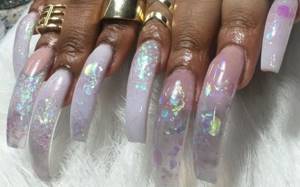
Interesting facts about manicure
Today, nail and hand care has a special place in the beauty industry. Usually we don’t think about the history of manicure, but it is fraught with many interesting facts and is rooted in the distant past.
The word manicure comes from the Latin “manus” (hand) and “cure” (to care), and this industry originated long before our era.
- The oldest manicure set was found in Chaldean burials in the southern part of the ruins of Babylon and dates back to 3200 BC. It was made of cast gold. In ancient times, manicure was not a purely female privilege, rather, on the contrary. At one time, it was even considered mandatory for Roman and Assyrian warriors, who were required to paint their nails and lips before the next attack.
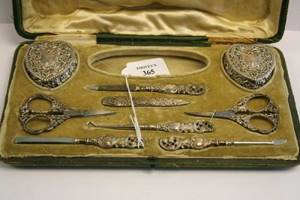
- In Ancient Egypt, long nails were a symbol of wisdom; they were believed to help better communicate with the gods. Only noble people were allowed to grow their nails; slaves cut them very short.
- And the color of nails in Ancient Egypt depended on the person’s class: very bright, richly colored nails indicated his high position, while slaves did not have their nails painted. Cleopatra liked to paint her nails with henna, which gave them a brownish-red hue. This queen, by the way, compiled the first reference book on the rules of body care and nail coloring.
- In Ancient Rome, the same principle applied as in Egypt: the longer and brighter the nails, the higher the class and position in society.

- In the East, vegetable dyes were injected into the base of the nail, which was very painful. But then there was no need to paint them, since they immediately grew colored.
- Later, for a long time, painted and long nails were considered bad manners. Painted nails were a distinctive feature of fallen women, actresses, demimonde ladies and courtesans. In the 16th century AD, people could be accused of witchcraft and sent to the stake for painted nails. And Parisian women cut them short, polished them to a shine with a suede pad and strengthened the nail plate with lemon juice. This method of strengthening is still relevant today.
- Manicure of a modern look first appeared in France. In 1830, when King Louis Philippe developed a hangnail, a doctor was ordered to remove it from the royal finger. A resourceful doctor, having completed this small operation, developed a special set for hand care. It was then that an orange stick, borrowed from dental instruments, came into it, without which not a single manicure salon is still complete. This doctor’s niece adopted the skills of her uncle and made manicure popular not only in court circles.
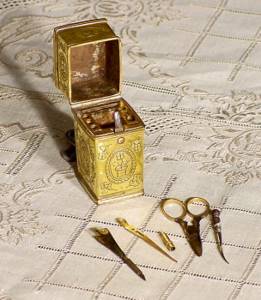
- The very first nail polishes looked like paste. It was applied to the nail plate, waited for it to dry and the nail absorbed the color, and then polished it until it was shiny with special suede velvet pads.
- A real breakthrough in the history of manicure came in 1932. This year Charles Lashman created the first nail polish. It was a very rich bright red color.
- False nails were invented by dentist Fred Slack. Having injured his nail during his work, he applied a piece of foil to it and covered it with filling material. The result is a nail that is quite similar to a natural one. According to another version, this dentist wanted to wean his wife from the bad habit of biting her nails. One way or another, nail extensions have gained worldwide popularity.

- People who frequently work on a computer may experience increased nail growth as the constant tapping of the keyboard acts as a massage and stimulates blood flow to the fingertips.
- These days, the nail industry is evolving at the same speed as digital technology, constantly updating its range of nail care products, including innovative equipment. So the custom of doing your own manicure, common in the past, is increasingly becoming a thing of the past.
Source
Celebrity Quirks
Pushkin also let go of the long nail on his index finger. On top he wore a gold thimble, indicating his affiliation with the Freemasons.
Nikolai Nekrasov, on the contrary, was wary of men with such a manicure. Despite all the passion of an avid gambler, the writer never played with them - he was afraid that the owner of a luxurious manicure would quietly mark the cards.

№4
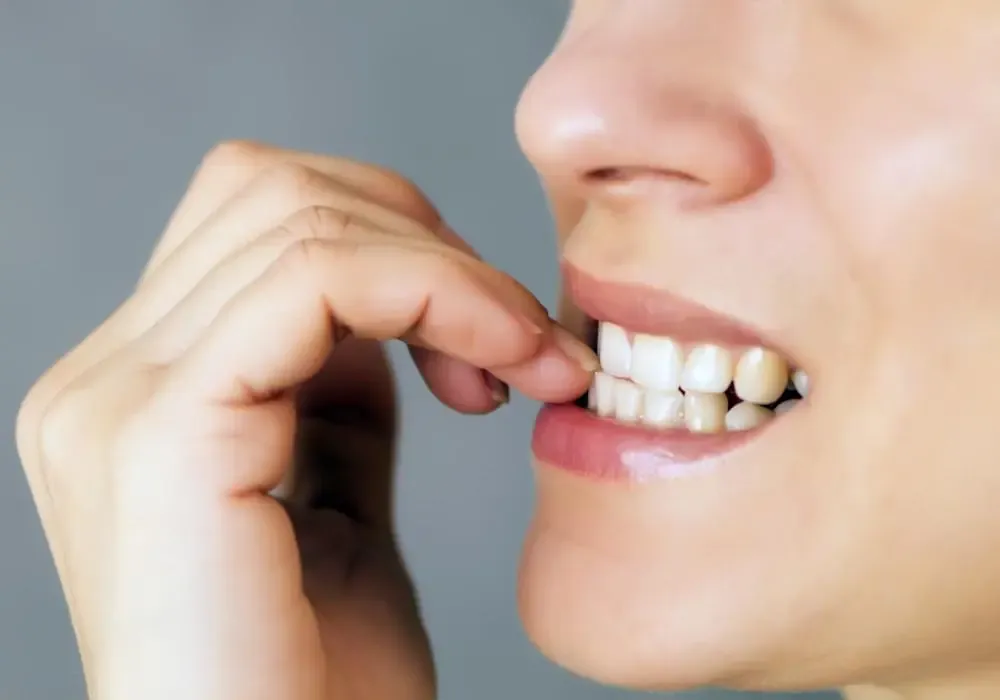
Many people bite their nails as children. But did you know that this is a mental disorder, which, moreover, has its own name - onychophagia. According to WebMD, approximately 50% of children ages 10 to 18 bite their nails. By the age of 30, most people give up this “habit.” However, there are people who bite their nails throughout their lives.
Although nail biting is not a harmful activity (although it is unsanitary), it can still cause a number of health problems. Such problems include the development of skin infections, inflammation of the nail bed, etc.
Record holder
Continuing the topic, we need to remember interesting facts related to records. In 2011, 45-year-old Chris Walton was included in the Guinness Book of Fame. She specially grew her manicure to become a record holder. Its total length on the left hand is 309 cm, on the right - 292 cm.
Walton takes care of his hands on his own, devoting several hours to it every day. To cover such an area with varnish, she needs to use 5 bottles at a time. The record holder says that a giant manicure does not prevent her from playing the piano, driving a car, or doing other things.
Nelvin Faisel Vuz's result is even more impressive. The man has not cut his nails for a quarter of a century and has grown them to 953 cm. He is listed in the Guinness Book of Records - no one has surpassed his result yet.
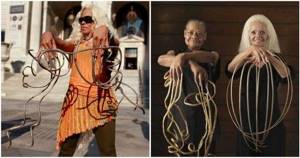
№6
Have you ever wondered why, after hitting your nail, it sometimes falls off? The thing is that the nail plate needs blood supply, oxygenation (oxygen saturation) and receiving nutrients for its growth. Therefore, when it is bruised, the microscopic connections responsible for supplying the plate with nutrients can be damaged. Because of this, its further growth is impossible. The body decides to get rid of the damaged nail plate and replace it with a new, healthy one.
For the sake of science
The review began with the hypothesis about the uselessness of nails, and ends with their benefits for science. They can be used to evaluate the hardness of minerals:
- Grades 7-9 will only scratch a diamond;
- Strength class 6 can be damaged by a file;
- 5th – gives in to a knife;
- on class 1-2 minerals, marks will be left by a human fingernail.
Using the latter, you can calculate the speed of continental drift. It is approximately equal to the growth rate of nails - a small error cannot be excluded.
№10
We have already written several interesting facts about nails, but why do people even need them? In fact, they play quite an important role. First, they are necessary for strength. They make the fingertips one of the strongest parts of the hand. It is thanks to them that a person can lift and hold objects with his fingertips. Secondly, they are needed for protection. They can protect your fingertips from damage due to physical impact. Thirdly, they are needed to perform small “work”. It is thanks to them that we can turn the pages of a book, scratch, pick up coins from the table, etc.
№11

They themselves have a rather complex structure and consist of several parts. The visible part is called the nail plate (body). There is also a root. This root is located under the skin and only a small part of it is accessible to the human eye. This is a white crescent at the base of the nail. It is most pronounced on the thumbs, worst of all on the little fingers.




